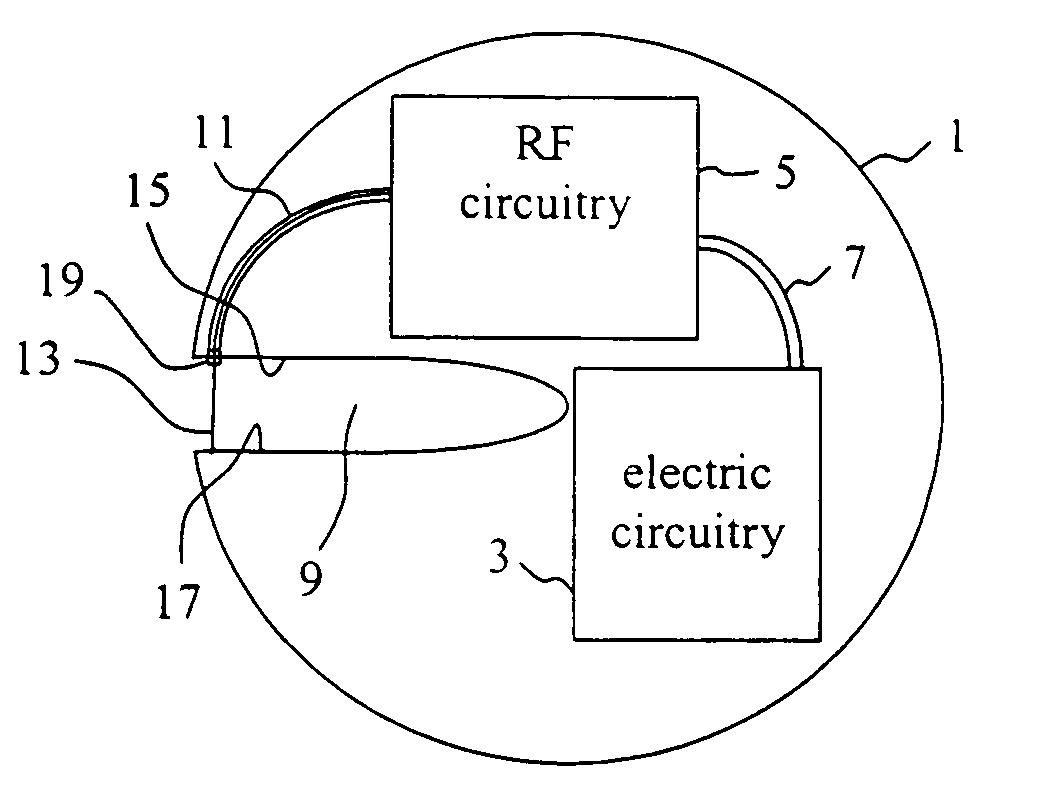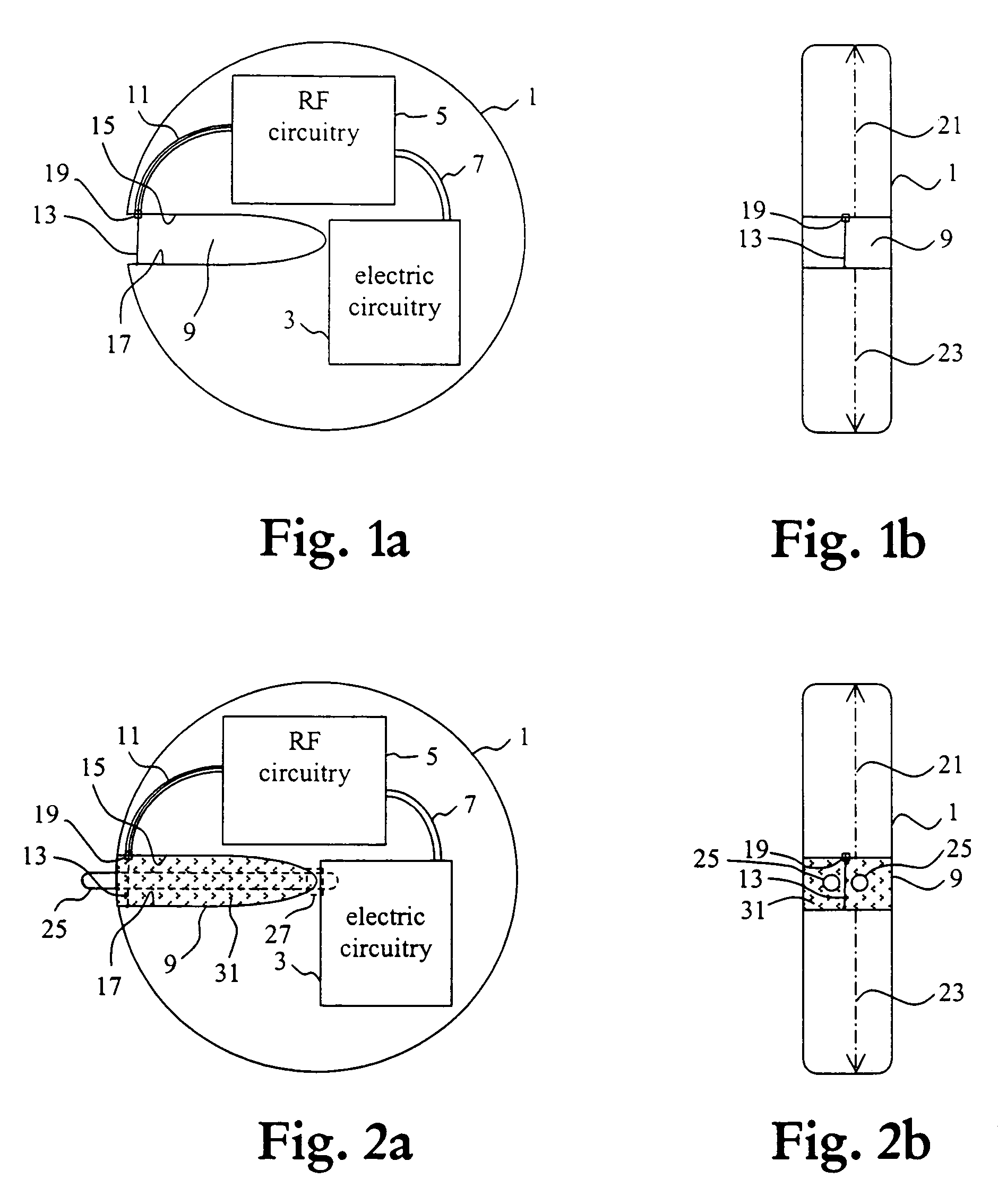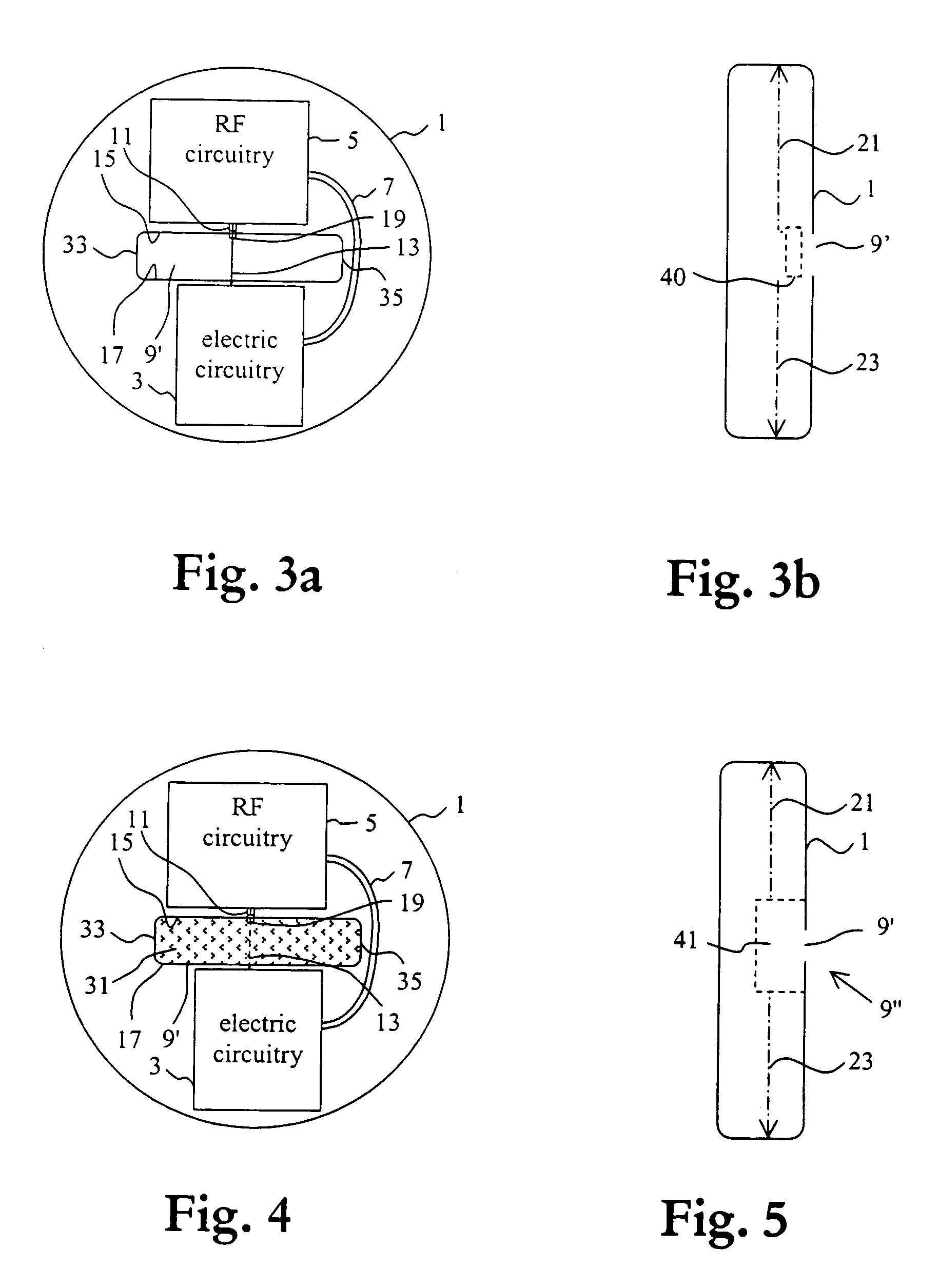Implantable medical device with slotted housing serving as an antenna
a medical device and slotted housing technology, applied in the field can solve the problems of low transmission data rate, limited use of implantable medical devices, and operating distance of this technique, and achieve the effects of low cost, convenient manufacturing, and convenient tuning
- Summary
- Abstract
- Description
- Claims
- Application Information
AI Technical Summary
Benefits of technology
Problems solved by technology
Method used
Image
Examples
Embodiment Construction
[0035]Throughout the figures similar parts and components, and portions thereof, are denoted by identical reference numerals.
[0036]A first preferred embodiment of an implantable medical device of the present invention will be described with reference to FIGS. 1a and 1b. The implantable medical device may be e.g. a pacemaker, an insulin dispenser or other medical equipment including a telemetry link, preferably a high frequency telemetry link.
[0037]The implantable medical device has an electrically conductive hollow housing 1, electric circuitry 3 for the operation of the implantable medical device (i.e., for administering a medical therapy), and radio frequency circuitry 5 for transmitting and / or receiving radio telemetry frequency signals. The electric circuitry 3 and the radio frequency circuitry 5 are interconnected (schematically indicated at 7) and are arranged in the electrically conductive housing 1 in a common space or in separate compartments, which may be shielded from eac...
PUM
 Login to View More
Login to View More Abstract
Description
Claims
Application Information
 Login to View More
Login to View More - R&D
- Intellectual Property
- Life Sciences
- Materials
- Tech Scout
- Unparalleled Data Quality
- Higher Quality Content
- 60% Fewer Hallucinations
Browse by: Latest US Patents, China's latest patents, Technical Efficacy Thesaurus, Application Domain, Technology Topic, Popular Technical Reports.
© 2025 PatSnap. All rights reserved.Legal|Privacy policy|Modern Slavery Act Transparency Statement|Sitemap|About US| Contact US: help@patsnap.com



